From minimal forest cabins to bold urban residences, black timber cladding has emerged as a defining element of modern architectural design. Its striking, shadow-rich aesthetic offers more than just visual drama – it delivers contrast, sophistication, and timeless appeal. But the popularity of black cladding isn’t only about its looks. It is a powerful tool for balancing architectural form, tradition, and performance.
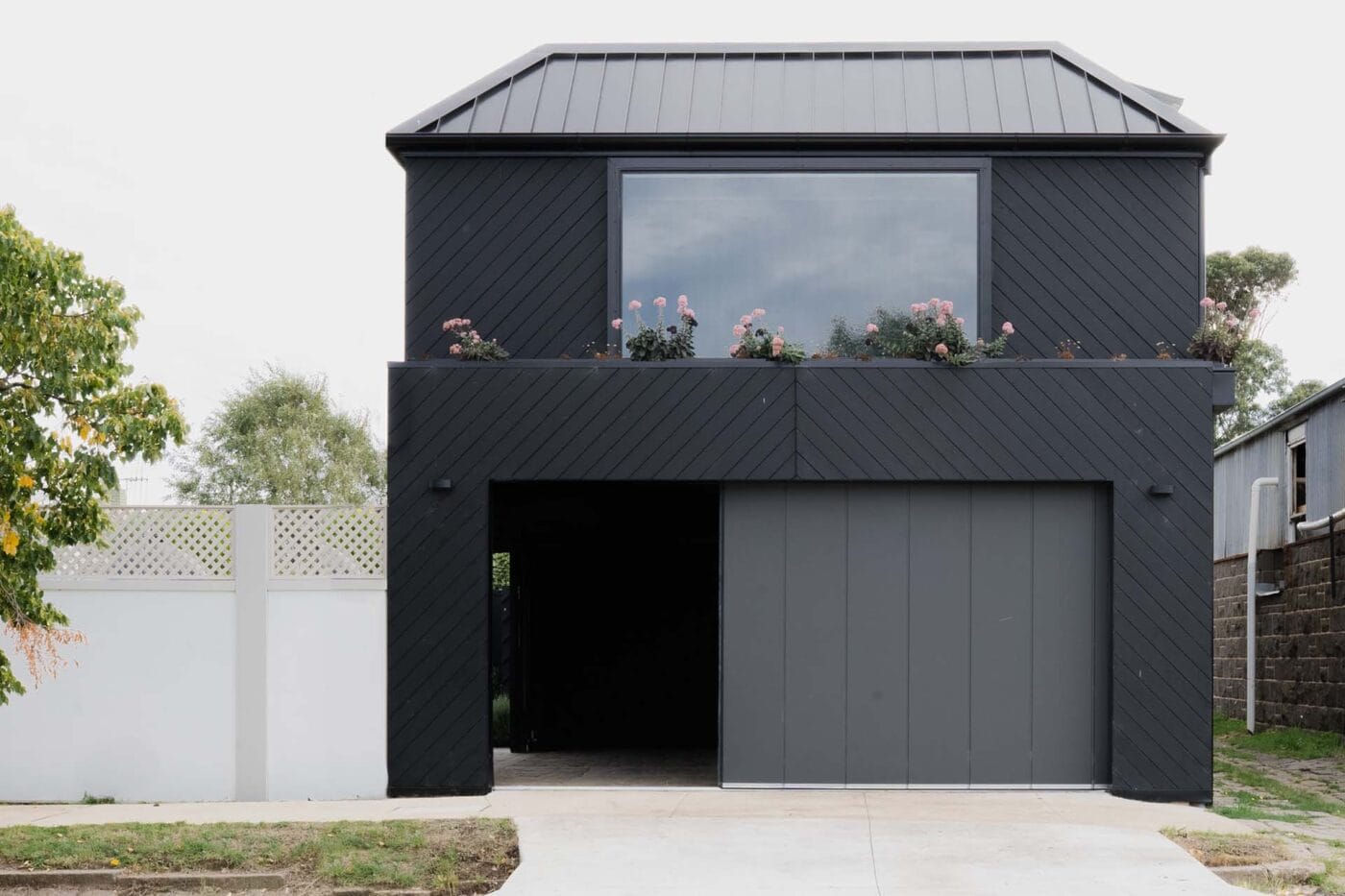
Black timber cladding has deep roots in European building traditions. For example, in the Netherlands and Belgium, traditional barns and rural buildings often featured timber treated with tar or oil as a practical measure to weatherproof and preserve the wood. This method not only protected the houses but also established a distinctive visual identity.
Similarly, Japan’s Shou Sugi Ban technique used charring to preserve wood, giving rise to the aesthetic of deep black exteriors. There are also modern technologies to get the same charred look.
Today, architects often reference these traditions to lend cultural depth and authenticity to modern projects. Black facades provide a visual link between past and present, nature and modernity.
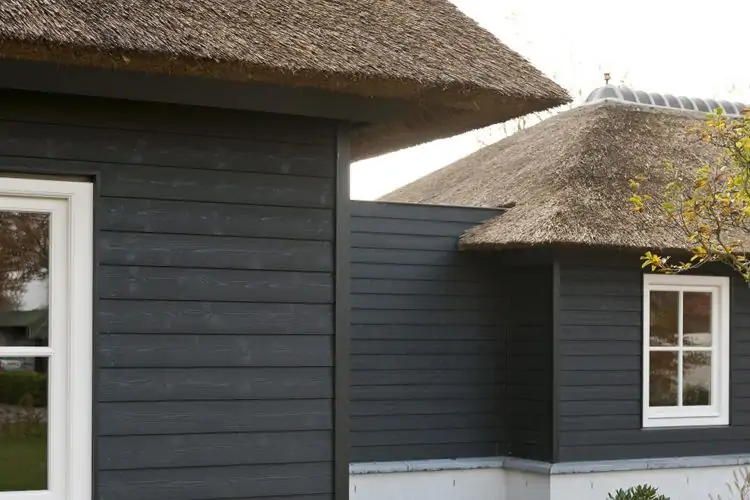
While traditional methods relied on charring or oil treatments, contemporary black wood cladding benefits from advanced technologies such as factory pre-painting and thermal modification. Read more why prefer thermally modified painted wood.
These innovations enhance durability, dimensional stability, and color retention. Factory-finished boards reduce on-site labor and ensure consistent, high-quality finishes. This way the materials require less maintenance, offer better protection against the elements, and are available in a broader range of profiles and surface textures.
Black timber cladding makes a powerful visual and functional statement. Black is also associated with permanence, calm, and confidence—qualities that resonate with both residential and public architecture.
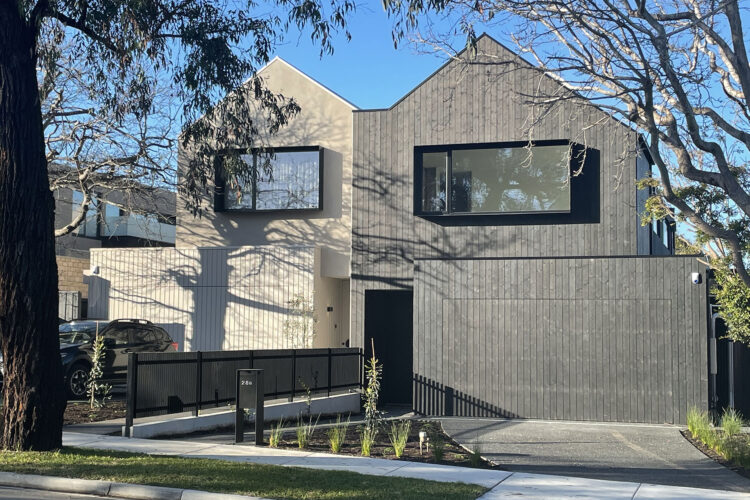
Think about fade resistance. UV exposure causes many black finishes to fade unevenly. Look for wood cladding with high-quality opaque coatings that ensure longer-lasting color.
Dark colors absorb more heat, which can affect dimensional stability. Opt for wood with low expansion and contraction rates, like thermally modified wood.
Maintenance. Consider how the finish ages over time. Some architects embrace patina and weathering, while others prefer more consistent appearance.
Opt for factory pre-painted. Specifying factory-finished black cladding ensures a consistent, high-quality appearance and better long-term performance. It also reduces installation time, eliminates weather-related delays, and minimizes maintenance needs over the years.
Texture and Profile. A brushed or textured surface can elevate the tactile experience and minimize visual wear. Shadow gaps, vertical and horizontal layouts, and board widths all influence the final result.
Pay attention to the paint used. When specifying painted cladding, it’s worth paying attention to the type of paint used. Water-based coatings are a healthier and more environmentally friendly choice.
From country homes in Flanders to mountain cabins in Scandinavia and art centers in Japan, black cladding adapts to a wide range of architectural typologies. It can be a backdrop for bold architectural moves, a unifier for complex forms and additions, a contrast in natural settings, a quiet material in dense urban areas.
When specifying black timber cladding, consider its UV resistance, dimensional stability, maintenance needs, surface profiles, fire regulations, and climate orientation. These practical aspects, combined with black’s visual power and cultural depth, make it an enduring choice across building typologies.
Black wood cladding is not just a design trend—it’s a powerful architectural choice rooted in tradition and elevated by modern techniques. When thoughtfully specified, it offers a unique blend of texture, mood, and longevity. Whether you’re seeking to make a quiet statement or add bold contrast, black cladding can be a defining element in your architectural language.

Make a statement with Vivid Opaque cladding, where rich, fully coated colors meet the durability of thermally modified wood. Finished with an opaque, water-based paint, this cladding offers a striking and long-lasting façade with a maintenance interval of 7–10 years.
Choose your perfect color and profile to bring your vision to life.
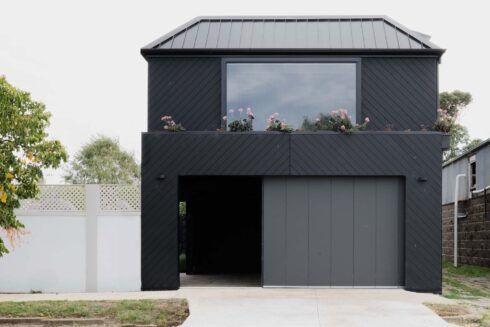
The eye-catching black Thermory Ignite cladding provides a bold look, while also offering the stability and durability that Thermory is known...
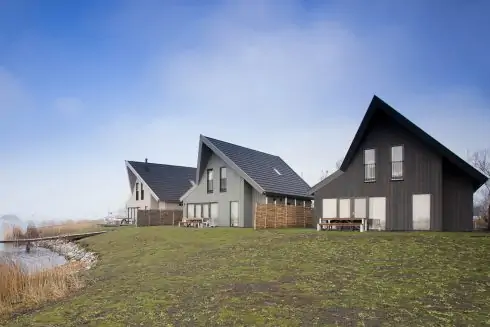
Real wood cladding has many functional benefits as well as a charming aesthetic. But if you are looking to make a bolder statement...